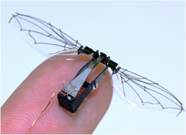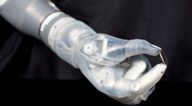Helping children w/ Autism
Milo is a robot developed by American humanoid manufacturer Robokind to support children with Autism. Two-feet tall, it has been designed specifically for parents, therapists, and educators to teach children social skills.
Watch a robot help a child w/autism. Helping people w/ spinal injuries. Robots are truly Amazing!
 video embed code by VideoLightBox.com v3.1
video embed code by VideoLightBox.com v3.1
Milo is a robot developed by American humanoid manufacturer Robokind to support children with Autism. Two-feet tall, it has been designed specifically for parents, therapists, and educators to teach children social skills.
 video embed code by VideoLightBox.com v3.1
video embed code by VideoLightBox.com v3.1
Exoskeletons demonstrate the potential robotics has in the medical world. Ekso Bionics, a company based in Richmond, California, has been manufacturing them for over ten years, working primarily with the military.
 video embed code by VideoLightBox.com v3.1
video embed code by VideoLightBox.com v3.1
UConn researcher Tim Gifford is studying how robots can help children with autism learn and communicate. The research is currently being conducted with students in kindergarten through fifth grade at Whiting Lane Elementary School in West Hartford, CT. To learn more about the robot.

Can engineers master the mechanics of flight, at the scale of insects?
 video embed code by VideoLightBox.com v3.1
video embed code by VideoLightBox.com v3.1

The system was developed by DEKA Integrated Solutions for DARPA's Revolutionizing Prosthetics
 jquery player by VideoLightBox.com v3.1
jquery player by VideoLightBox.com v3.1